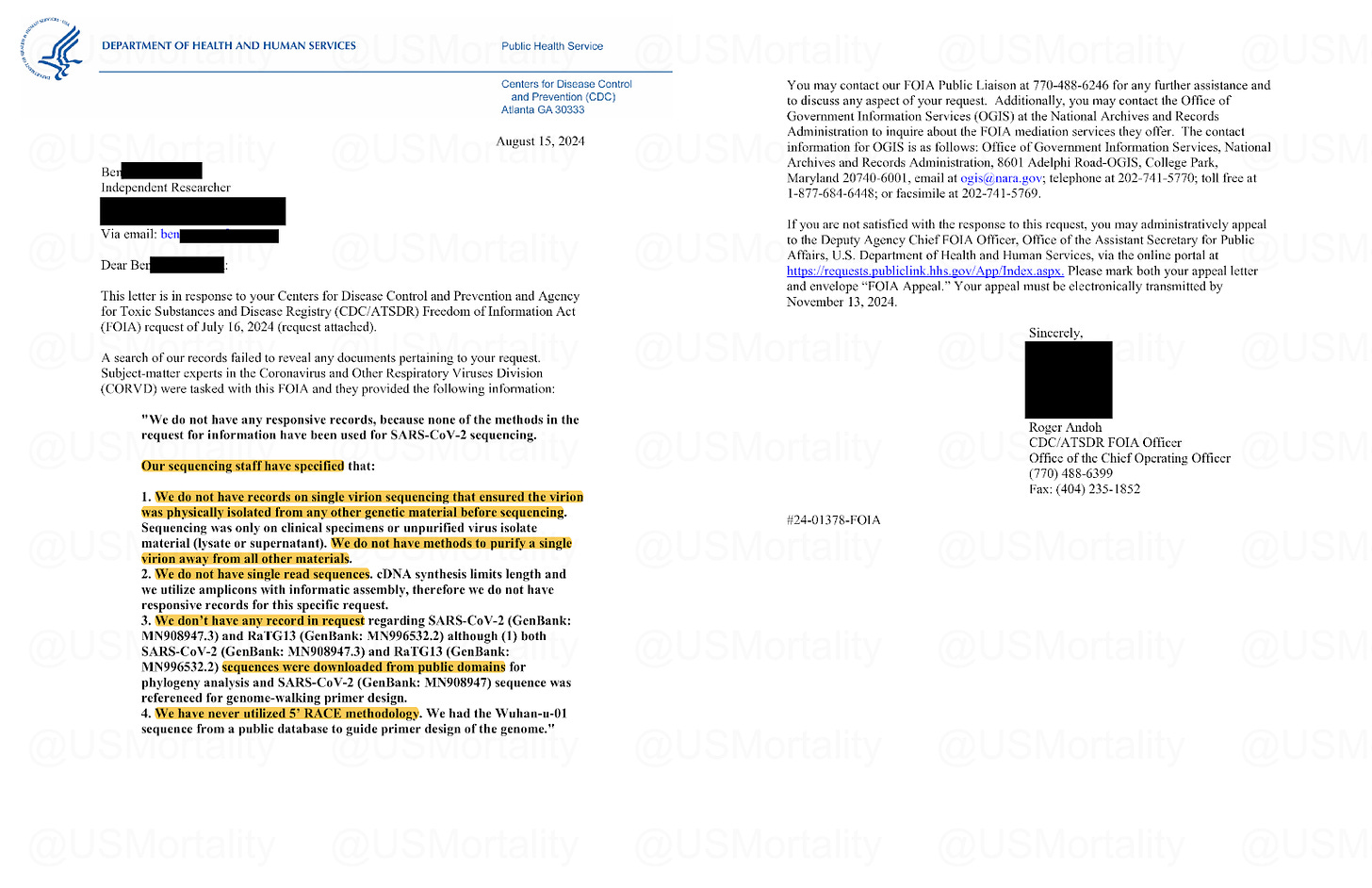An official CDC FOIA response confirms that the validation of the SARS-CoV-2 genome has not been completed to scientific standards!
CDC Unable to Scientifically Verify Full SARS-CoV-2 Genome, Leaving Potential for Semi-Random Construct.
CDC has responded to my FOIA request…
…, in which I have asked for records related to these four points:
Records on single virion sequencing of SARS-CoV-2 that ensured the virion was physically isolated from any other genetic material before sequencing.
Records of a single sequencing (long-)read from the first position [..] to the last position [..] of the genome. [..]
Records of a perfectly assembled contig [..] by a metagenomic assembler like Megahit (as used by Wu et al, 2020) [..].
Records of RACE (Rapid Amplification of cDNA Ends) processes carried out on a patient sample or viral culture [..]
The CDC stated that they lack the capability to isolate a single virion from all other genetic material present in a sample, and that they don’t have records that this has ever been performed or even is possible.
They also indicated that they do not possess or have knowledge of any single read or complete assembly that would mathematically confirm the complete genome of a virion.
Furthermore, the CDC relied exclusively on publicly available sequence data and did not employ the RACE (Rapid Amplification of cDNA Ends) technique to verify the manually identified genome ends by Chinese researchers. Verification of these ends is crucial, as the presence of additional bases beyond the first and last positions of the reference genome would suggest that RACE amplification does not capture the true terminal sequences. Although RACE amplicon data for SARS-CoV-2 has not been published, findings from the same researchers who studied the RaTG13 virus suggest that this may be the case, highlighting the need for independent validation.
Long-read sequencing has not yet convincingly demonstrated the complete sequence of the genome, as errors and missing sequence ends prevent the generation of a high-confidence genomic model.
The De Bruijn graph approach to short-read assembly may generate multiple genome candidates by combining various segments of genetic material. This raises the possibility that the SARS-CoV-2 genome could be, a semi-random construct, formed through the recombination of genetic sequences using this methodology.
This hypothesis remains unchallenged, as the reference genome has never been fully sequenced from start to finish, nor assembled using the overlap-layout-consensus (OLC) method which could possibly offer more confidence in the reference genome.
You can try out how the De Bruijn graph approach works, on my web tool at https://debruijn.mortality.watch/
X thread: https://x.com/USMortality/status/1825961166667133203
Let me know your thoughts in the comments!
++ Please consider subscribing to support my work! I provide all my work transparent and for free, but any contribution helps! ++





Makes you wonder what's in that vaccine...
The (CDC)Center for Democrat Control ought to immediately admit that the Monkey 🐵 Pox is also without SCIENTIFIC support. That the Communist Demon Rats merely seek to use mail in ballots. !!!!!!!!!!